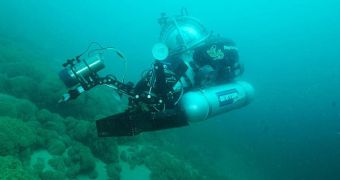The Pavilion Lake, in British Columbia, Canada, is arguably one of the most peculiar ones in the world. It features bacterium-built, coral-shape structures that are not similar to any others in the world, and that have not been subjected to attacks by snails, worms and other grazing animals. Because of these peculiarities, scientists have established the Pavilion Lake Research Project (PLRP), which aims to study the microbialite structures in close detail. But even that would not explain why NASA and CSA (Canadian Space Agency) astronauts are training at the premises.
As Space accurately points out, there are no freshwater lakes – or of any other type, for that matter – on the Moon. Mars had its own seas and lakes, but they dried up and froze billions of years ago, so this type of training is not exactly in tune with the cosmic realities, so to speak. Nonetheless, the American space agency's MMAMA (Moon and Mars Analogue Missions Activities) program continues unabated at the location. And, according to the new funding-approval documents, it will continue to do so for at least several years.
“We're doing science in a setting where we have limited life support. I can't just walk out and hang out with [an interesting] rock all day,” PLRP's principal investigator, NASA Ames Research Center scientist Darlene Lim, explains. This essentially means that lessons learned here, in this very peculiar environment, are of tremendous importance to future human space-exploration endeavors elsewhere in the solar system or beyond.
“We wanted to make sure that we discussed how to balance being execution-minded and discovery-minded. Execution-mindedness is where you're very good at following a sequence of steps. That's great, [but] you might [fly right] by something that was incredibly important,” she adds. Knowing when to stop with the plan, and when to follow an interesting lead is fundamental for future astronauts. It would be “a real shame to send somebody all the way to Mars and have them miss the alien, right?” Lim adds.
“It reminded me of a ballet class where the teacher shows you how to do something, then you're supposed to do it. And then they'll come around and correct you. But the rest of the time, you're kind of watching each other in the mirror. And that's exactly what this was. It was an opportunity to watch each other in the mirror. And watch yourself in the mirror. And adjust,” she concludes.

 14 DAY TRIAL //
14 DAY TRIAL //